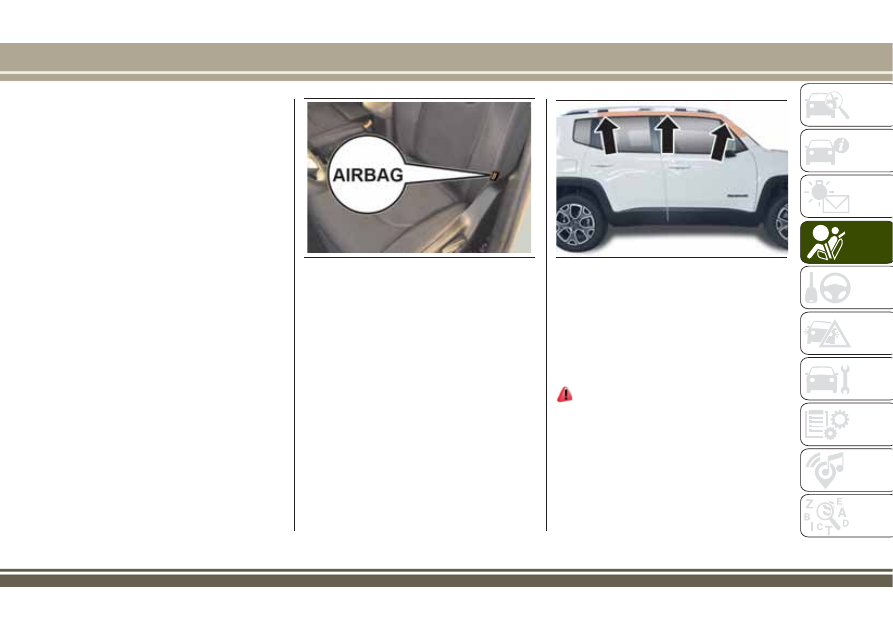Jeep Renegade (2018 year). Instruction - part 9

SIDE AIRBAGS
To help increase occupants protection in
the event of side impact collisions, the
vehicle is equipped with front side bags
and window bags.
Side bag
These consist of two bags located in the
front seat backrests fig. 102 that protect
the occupants’ pelvis, chest and shoulder
area in the event of a side impact of
medium/high severity. They are marked
by the "AIRBAG" label sewn on the outer
side of the front seats.
Window bag
This consists of a "curtain" bag housed
behind the roof side trim and covered by
special trims fig. 103. They are designed
to protect the head of front and rear
occupants in the event of a side
collision, thanks to the wide cushion
inflation surface.
The deployment of side bags in the event
of side impacts of low severity is not
required.
In the event of a side impact, the system
provides best protection if the passenger
sits on the seat in a correct position, thus
allowing correct window bag deployment.
104) 105) 106) 107) 105) 109) 110) 111) 112) 113) 114) 115)
Important notes
Do not wash the seats with water or
pressurised steam (wash by hand or at
automatic seat washing stations).
The front and/or side airbags may
activate in the event of sharp impacts to
102
J0A0178C
103
J0A0180C
141
the underbody of the vehicle (e.g. impact
with steps, pavements, potholes or road
bumps etc.).